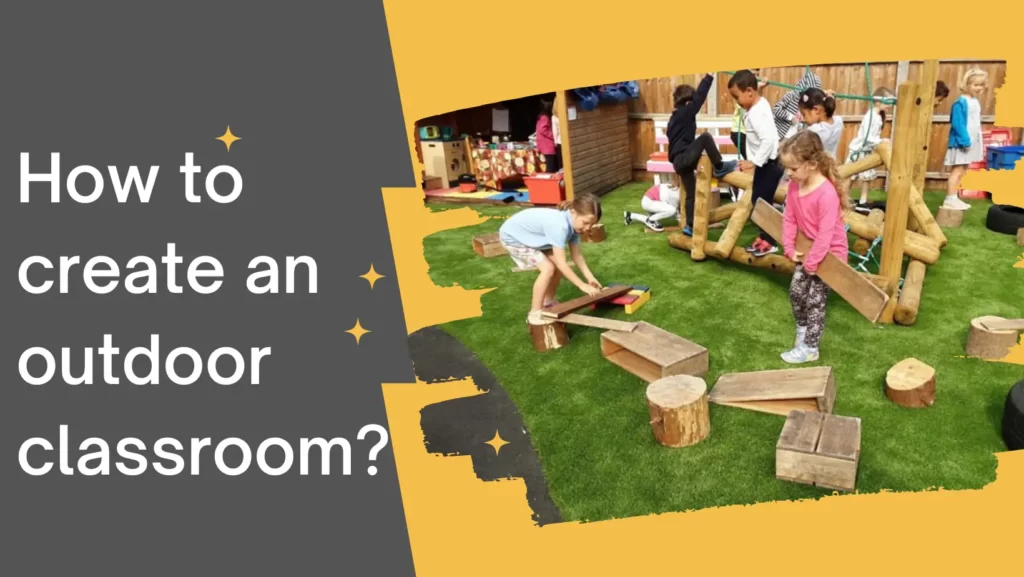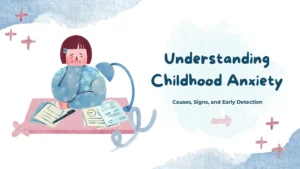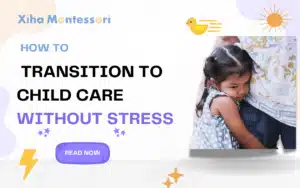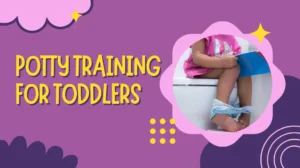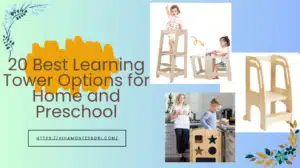Every day, educators face the challenge of engaging young minds. In our fast-paced digital world, traditional classroom environments sometimes fail to engage the curiosity and attention of young learners. Creating an outdoor classroom is a great idea, and more and more schools are embracing this approach. In addition, the American Academy of Pediatrics of Pediatrics recommends building outdoor classrooms to provide students with more opportunities for social interaction.
The outdoor classroom takes learning beyond the four walls and into the arms of the natural world. Here, the environment itself becomes a teaching tool that promotes exploration, discovery and connection with nature. Creating an outdoor classroom involves aspects such as choosing the right location, designing the layout, selecting appropriate furniture and incorporating natural elements and considering safety and accessibility.
Creating an outdoor classroom can be an exciting journey. It’s about more than just placing desks and chairs outside; it’s about rethinking education in a way that aligns with the innate curiosities of children.Keep reading to discover how these spaces can revolutionize the way we think about education.
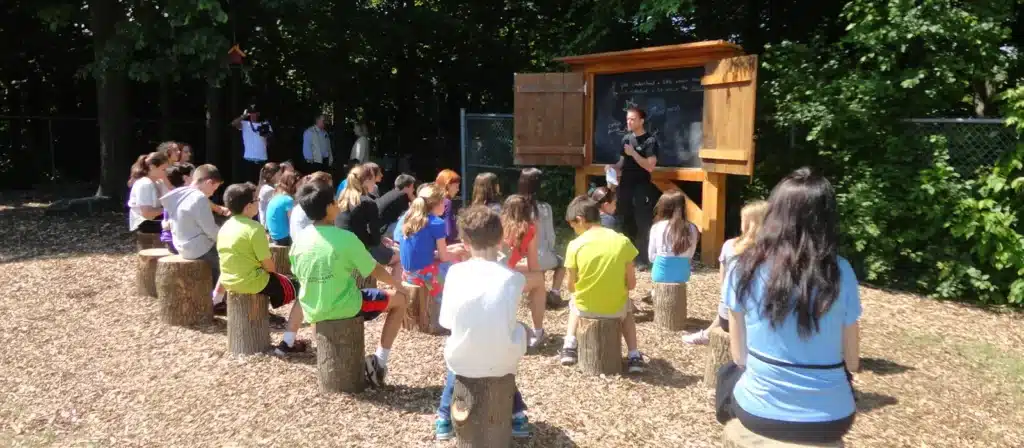
What is an Outdoor Classroom?
An outdoor classroom is a learning environment that takes education outdoors. It is a vibrant living space where the boundaries of the traditional classroom expand to include the natural world. Not only does it benefit the physical and mental health of students, but it also exposes children to the outside world.
In an outdoor classroom, learning is not limited to textbooks or whiteboards. Instead, it’s in the rustling leaves, the patterns of shadows, the mini ecosystems under rocks and the endless sky above. Such classrooms can be as simple as a garden area with seating or as sophisticated as a fully equipped learning space with designated areas for different subjects.
What Does an Outdoor Classroom Look Like?
An outdoor classroom varies greatly in appearance, reflecting the unique environment and educational goals of each school. It can range from a small garden with benches to an expansive area with various stations and features. Essential elements often include seating arrangements like benches or portable chairs, tables or flat surfaces for writing and activities, and perhaps a central focal point like a stage or a gathering circle.
This classroom might also include interactive elements like a weather station, a butterfly garden, a vegetable plot, or a water play area. It’s a space that invites interaction and exploration, designed to stimulate curiosity and learning through direct experience with the natural world.
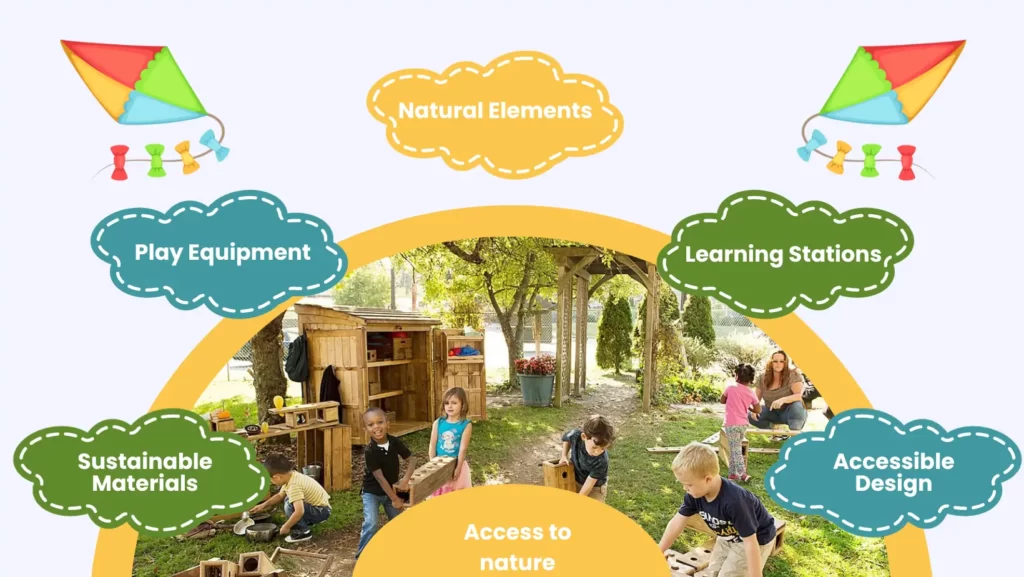
Outdoor Classroom Features
The features of an outdoor classroom are as diverse as the learning opportunities they provide. Key features might include:
- Natural Elements: Trees, plants, gardens, rocks, water sources, and sand areas that encourage hands-on interaction and exploration of nature.
- Learning Stations: Specific areas dedicated to different subjects or activities, like a reading nook, a science area, or an art corner.
- Play Equipment: Items like weather stations, sundials, or telescopes that blend play with learning.
- Sustainable Materials: Use of eco-friendly, durable materials for furniture and play equipment, reflecting the ethos of environmental stewardship.
- Accessible Design: Layouts that are inclusive and accessible to all students, ensuring that the outdoor classroom is a space for everyone.
- Access to nature: Away from traditional classroom activities, children have the opportunity to interact with nature.
What are the Benefits of an Outdoor Classroom?
The benefits of an outdoor classroom are manifold, impacting students, teachers, and the broader school community. For students, it offers a hands-on learning experience that enhances engagement, improves physical health, and supports emotional and social development. Nature has a calming effect, which can reduce stress and behavioral issues, and foster a love for the environment.
For teachers, outdoor classrooms provide a versatile teaching space to bring lessons to life. It’s a place where they can integrate curriculum with the natural world, making learning more dynamic and memorable. This approach can lead to improved academic outcomes, especially in subjects like science, geography, and environmental studies.
Additionally, an outdoor classroom strengthens the school community. It can become a gathering space for events, a project for student-led initiatives, and a point of pride for the school. It encourages parental and community involvement, creating a stronger, more connected educational community.

Tips for Designing an Outdoor Learning Space
Designing an outdoor learning space requires careful consideration of several factors:
- Understand the Needs: Consider the age of the students, the curriculum, and the specific educational goals of your school.
- Engage with Stakeholders: Involve teachers, students, parents, and the community in the planning process to ensure the space meets the needs and expectations of all.
- Choose the Right Location: The space should be easily accessible, safe, and offer a variety of natural elements.
- Select Appropriate Furniture and Materials: Opt for durable, safe, and environmentally friendly materials.
- Plan for All Seasons: Consider how the space will be used throughout the year and plan for weather variations.
- Incorporate Flexibility: Design spaces that can be adapted for different activities and learning styles.
- Ensure Safety and Accessibility: Make sure the outdoor classroom is safe and accessible for all students, including those with disabilities.
- Foster a Connection with Nature: Design the space to encourage interaction with natural elements, fostering a sense of wonder and environmental stewardship.
- Integrate Technology Thoughtfully: Consider how technology can enhance outdoor learning without detracting from the natural experience.
- Build in Stages: Start small and expand the space over time, allowing for adjustments based on use and feedback.
Essential Outdoor Classroom Equipment
An outdoor classroom requires specific equipment to make it a conducive learning environment. This includes:

1.Outdoor Furniture
Outdoor classrooms require furniture that can endure various weather conditions. This includes:
- Weather-Resistant Tables and Chairs: These should be sturdy yet light enough to move around if needed.
- Benches and Seating Areas: Benches made from materials like treated wood or recycled plastic are ideal for outdoor settings.
- Outdoor Rugs: These can define specific areas and make sitting on the ground more comfortable.
2.Interactive Learning Stations
These stations can transform theoretical learning into practical, hands-on experiences:
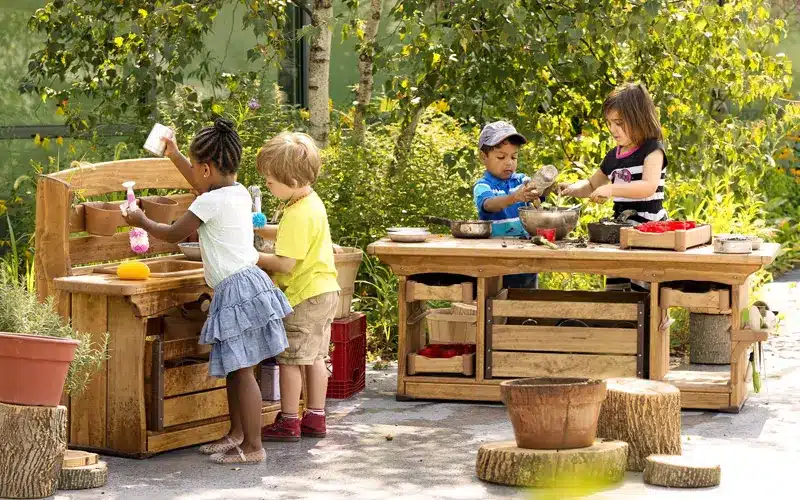
- Nature Exploration Tools: Magnifying glasses, insect houses, and bird feeders encourage close-up exploration of nature.
- Science Stations: Weather stations or simple plant-growing areas can teach basic science concepts.
- Art and Creativity Corners: Easels and weather-proof art supplies allow children to express their creativity using nature as their muse.
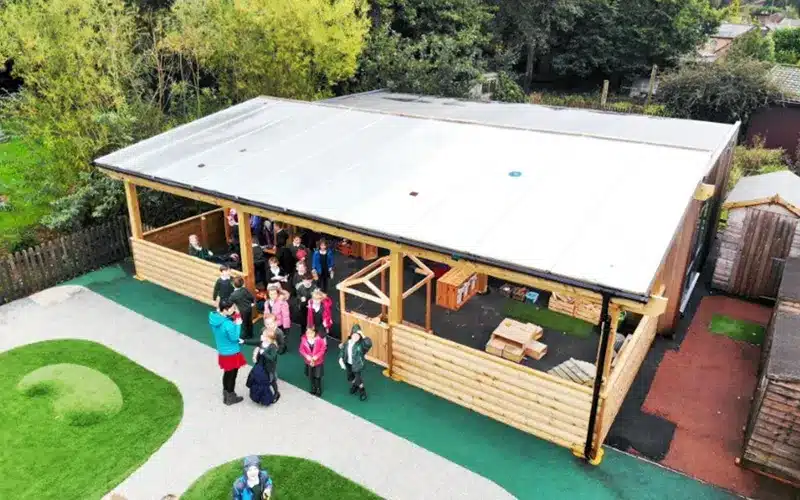
3.Shade and Shelter
Protection from the elements is necessary for a functional outdoor classroom:
- Canopies or Shade Sails: These provide shade and reduce exposure to UV rays.
- Outdoor Gazebos or Tents: Temporary or permanent structures can offer shelter from rain or a respite from the sun.
4.Sensory Play Elements
Sensory play is vital in early education, and the outdoor classroom is an ideal place for this:
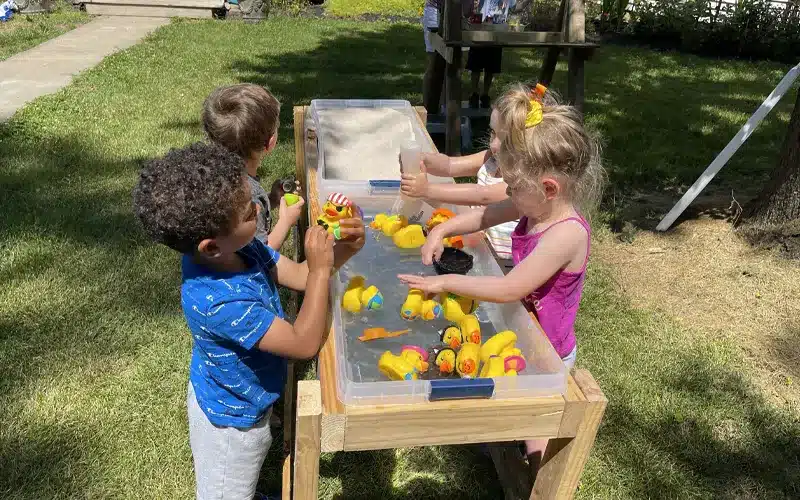
- Sandboxes: A classic feature that encourages tactile play and can be used for various educational activities.
- Water Tables: Great for sensory play and understanding basic water principles.
- Gardens and Planting Areas: Children can learn about biology and responsibility by caring for plants.
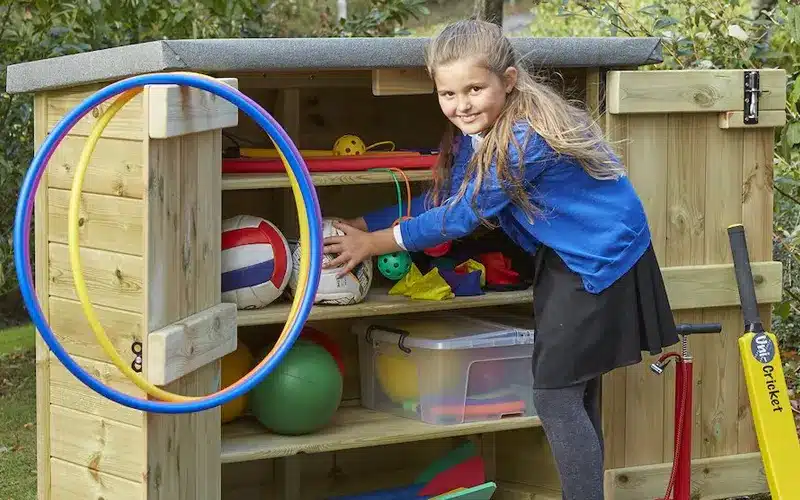
5.Storage Solutions
Outdoor classrooms need safe, weather-proof storage:
- Lockable Storage Boxes: To store equipment and teaching materials.
- Shelving Units: Ideally made from durable, weather-resistant materials.
6.Teaching Aids and Resources
Effective outdoor learning requires the right teaching materials:
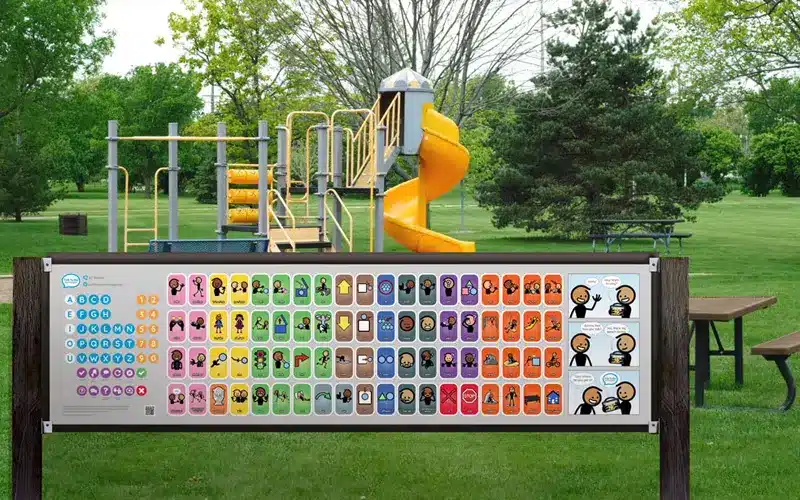
- Chalkboards or Whiteboards: These are essential for instruction and displaying information.
- Educational Signage: Signs that explain the flora, fauna, and other natural elements in the area.
7. Safety Features
Safety is paramount in any educational setting:
- Fencing or Natural Barriers: To define the classroom area and keep children safe.
- Soft Flooring Materials: Rubber mats or mulch can provide safer surfaces under play equipment.
8. Environmental Considerations
Outdoor classrooms should promote environmental stewardship:
- Recycling Bins: To teach children about recycling and caring for the environment.
- Compost Bins: For organic waste from gardens or food scraps, teaching about the cycle of life and decay.
Top Tips for Montessori Activities Outdoors and in Nature
When planning Montessori activities in an outdoor setting, consider the following tips:
- Focus on Sensory Experiences: Activities should engage all senses, such as gardening, nature walks, and sensory paths.
- Encourage Exploration and Discovery: Allow children to explore their surroundings, ask questions, and make discoveries on their own.
- Integrate Practical Life Skills: Activities like planting, watering plants, or studying insects can teach responsibility and care for the environment.
- Promote Physical Activity: Use the outdoor space for physical education, balancing motor skills development with cognitive learning.
- Incorporate Art and Creativity: Nature provides endless inspiration for art, music, and creative expression.
These activities should be adaptable to various age groups and abilities, ensuring that all students can participate and benefit from outdoor learning.
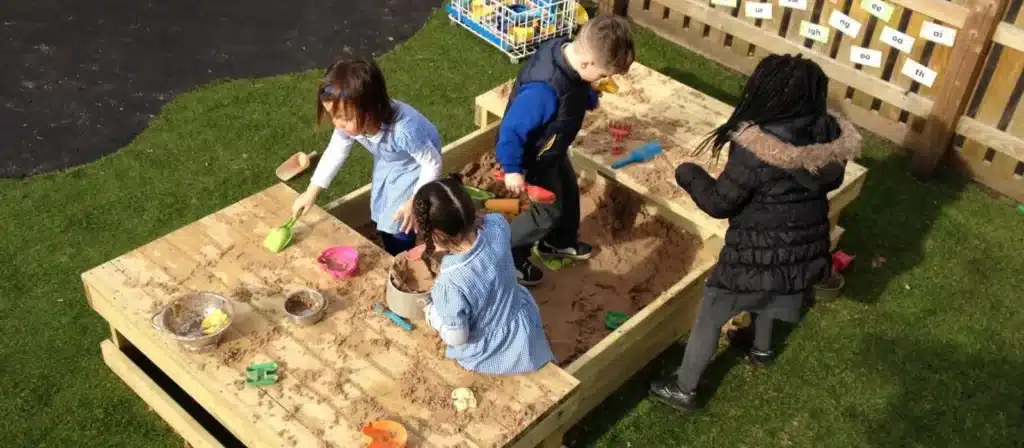
Why Organize Outdoor Classrooms?
Based on more than 20 years of experience in the education industry and some information I reviewed, I summarized some reasons.
In a related OE inspection in Canada, Passmore summarized his research by saying
Outdoor environmental education is certainly not the answer to all our educational problems. But there is growing recognition that it is a method of teaching that can add that other important “R” to every subject on the curriculum – relevance in what we teach about the world in which our young people live
That is, outdoor activities are good for children and teenagers, both mentally and physically. Indeed, these participants reinforced the belief that open courses offer students an opportunity to disconnect from technology and reconnect with nature.
Research investigating the development of environmental awareness and stewardship in children and adolescents suggests that early experiences and learning in the natural environment play an important role in influencing future responsible environmental behavior and knowledge
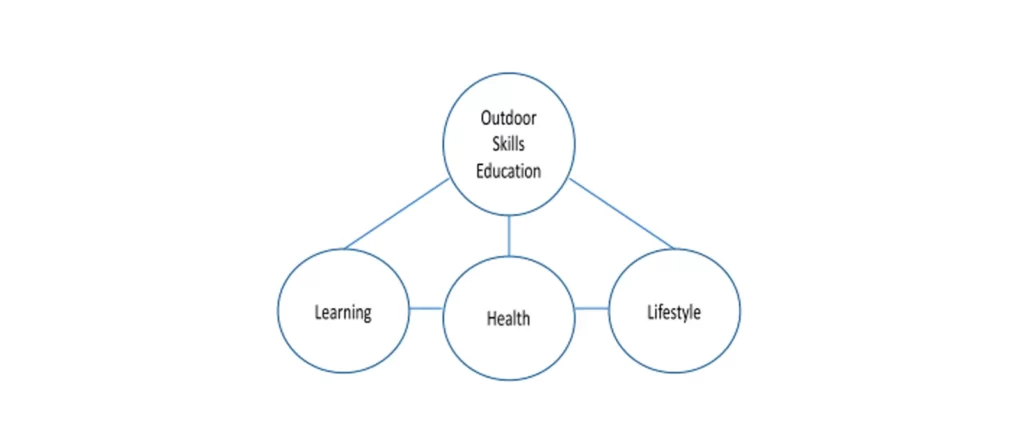
Organizing outdoor classrooms is crucial for several reasons:
- Enhanced Learning: Studies have shown that learning in natural environments increases students’ ability to understand and retain information. The dynamic and interactive nature of outdoor classrooms makes learning more engaging and memorable.
- Physical and Mental Health: Regular exposure to nature has been linked to improved physical health, reduced stress, and better mental well-being in children.
- Environmental Stewardship: Outdoor classrooms cultivate a sense of environmental responsibility and connection to the natural world, essential in fostering future generations of environmental stewards.
- Social and Emotional Development: These classrooms promote social interaction, teamwork, and empathy among students, as they engage in group activities and learn to navigate the natural environment together.
- Creativity and Problem Solving: The unstructured nature of outdoor learning encourages creativity, critical thinking, and problem-solving skills, as students are often tasked with open-ended questions and real-world challenges.
What is Outdoor Classroom Day?
Outdoor Classroom Day was initiated as a part of a campaign called “Empty Classroom Day,” which started in 2011. The idea for this campaign emerged from a group of educators and environmentalists who were discussing how schools could address the issue of children spending less time outdoors. This conversation took place during the launch of Tim Gill’s “Sowing the Seeds” report. The aim was to create a new campaign to encourage outdoor learning in schools.
The first actual event of this kind took place in 2012 with a handful of schools in London, England, participating. The campaign quickly gained traction, and by 2015, over 600 schools in 15 countries were involved. As the campaign grew, the volunteers who were running it recognized the need for dedicated investment and support.
The campaign has its roots in addressing a growing concern about children spending less time outdoors, affecting their health, wellbeing, and development. Outdoor Classroom Day aims to highlight and remedy this by encouraging and celebrating outdoor play and learning.
What Can You Teach Students Outdoors?
Outdoor teaching transforms conventional education, offering a richer, more hands-on learning experience. From reading under the shade of a tree to observing the intricate patterns of nature, the possibilities are endless. Outdoors, students learn not just academically, but also about life, developing skills like observation, critical thinking, and respect for nature.
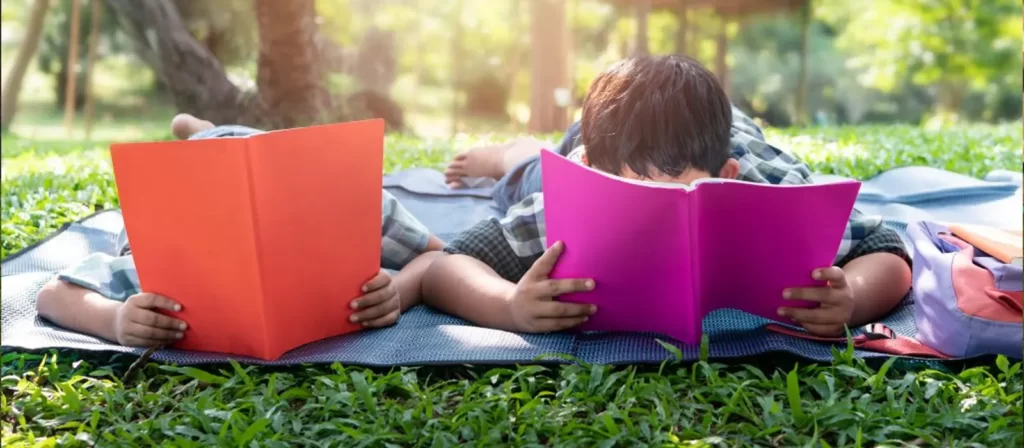
Reading
Outdoor reading sessions are more than just reading outside. They are an opportunity to immerse students in a sensory-rich environment, enhancing their understanding and appreciation of literature. By reading in nature, children connect with the text in a more profound way.
- Contextual Learning: When students read about nature, doing so in the natural environment adds context, making the learning experience more tangible and meaningful. A story about forests, for instance, becomes alive when read under the canopy of trees.
- Sensory Engagement: The outdoor setting engages all senses, not just sight and sound. The feel of the wind, the smell of grass, and the rustle of leaves all contribute to a more immersive reading experience.
- Enhanced Concentration: Natural environments have been shown to reduce stress and increase concentration. Students often find it easier to focus and absorb information when they’re in a calm outdoor setting.
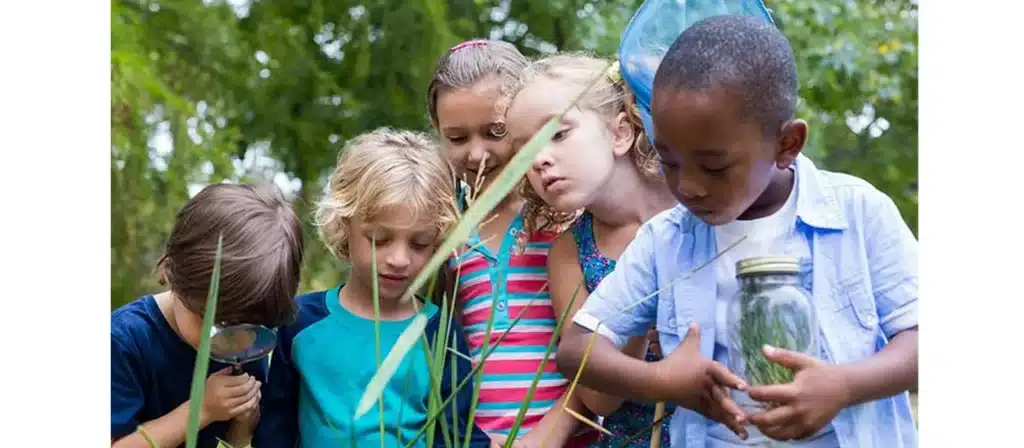
Observation
Observation is a key skill in scientific and critical thinking. Outdoors, students have the chance to observe real-world phenomena, ask questions, and develop hypotheses, turning every outing into a learning opportunity.
- Biodiversity Exploration: Whether it’s a biology class observing different plant species or a geography lesson on landforms, the outdoors is a live encyclopedia. Such direct interaction with the subject matter enriches understanding.
- Weather and Seasons: Observing weather patterns and seasonal changes firsthand helps students grasp these concepts better. They learn not just theoretically, but by experiencing and witnessing the changes in their environment.
- Sensory Observations: Outdoor learning allows students to use all their senses, fostering a deeper understanding of their surroundings. This multisensory approach is particularly beneficial for young learners, as it enhances memory and learning experiences.
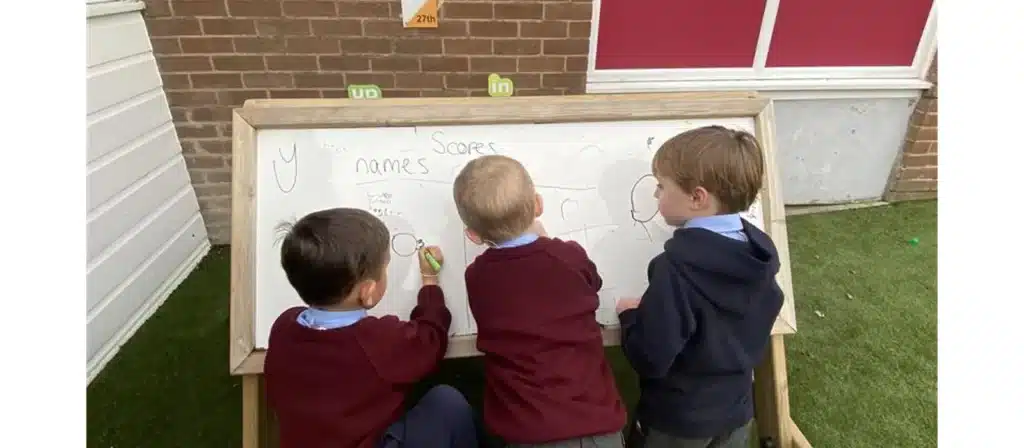
Writing
Outdoor writing activities can ignite a student’s creativity and provide a fresh perspective. From nature journals to poetry inspired by the environment, the natural world is a canvas for young writers.
- Creative Inspiration: Nature serves as a muse, inspiring students to write creatively. Describing a scenic view, penning a poem about a blooming flower, or crafting a story set in a forest can unleash their imagination.
- Reflective Journals: Keeping a nature journal encourages students to reflect on their outdoor experiences, fostering a personal connection with their learning and the environment.
- Enhanced Descriptive Skills: Writing outdoors allows students to use their observations to enhance their descriptive writing. They learn to pay attention to details, from the texture of leaves to the patterns of the clouds.
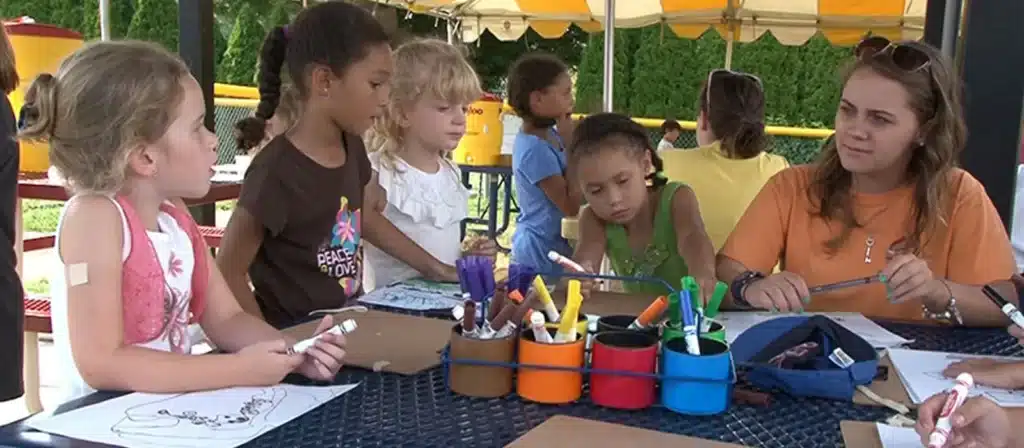
Good Behavior
The outdoors is an excellent setting for teaching and reinforcing good behavior. The open environment encourages cooperation, respect, and responsibility in a way that indoor settings may not.
- Teamwork and Cooperation: Group activities in nature, such as building a birdhouse or organizing a clean-up, teach students the importance of working together and respecting each other’s roles.
- Environmental Responsibility: Outdoor learning fosters a sense of stewardship for the environment. Activities like planting trees or studying the impact of littering help students understand the importance of caring for the planet.
- Respect for Nature: Direct interaction with nature teaches students to respect and appreciate the environment. This respect often translates into better behavior and a more caring attitude towards their surroundings and peers.
In conclusion, creating an outdoor classroom is a journey that can profoundly impact the educational experience. It’s a commitment to a more holistic, engaging, and inclusive approach to learning. As a leader in the educational furniture industry, Xiha Montessori is dedicated to supporting schools in this endeavor, providing expertise and high-quality resources to make this vision a reality.

